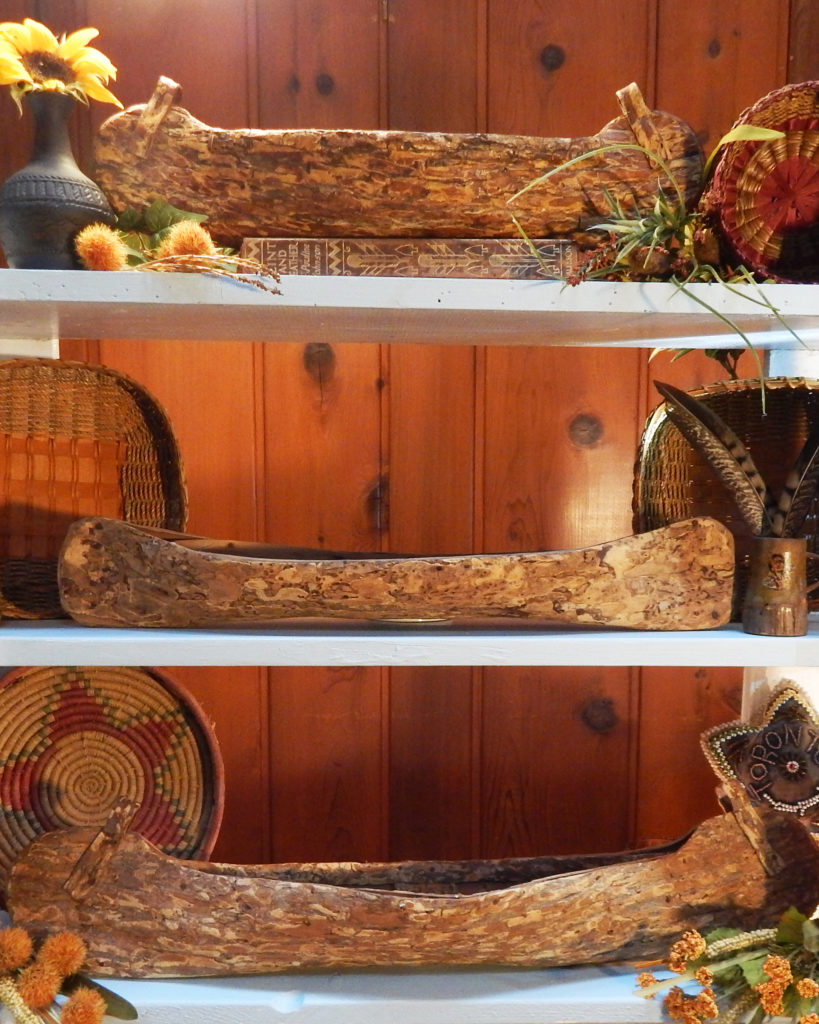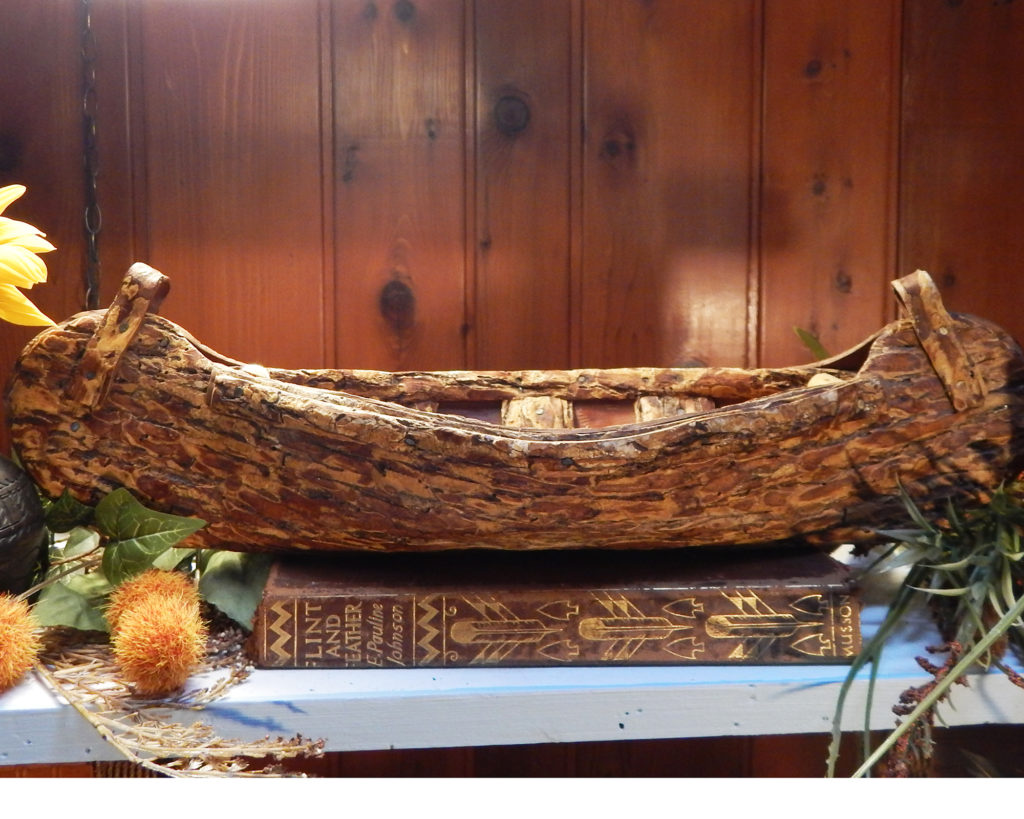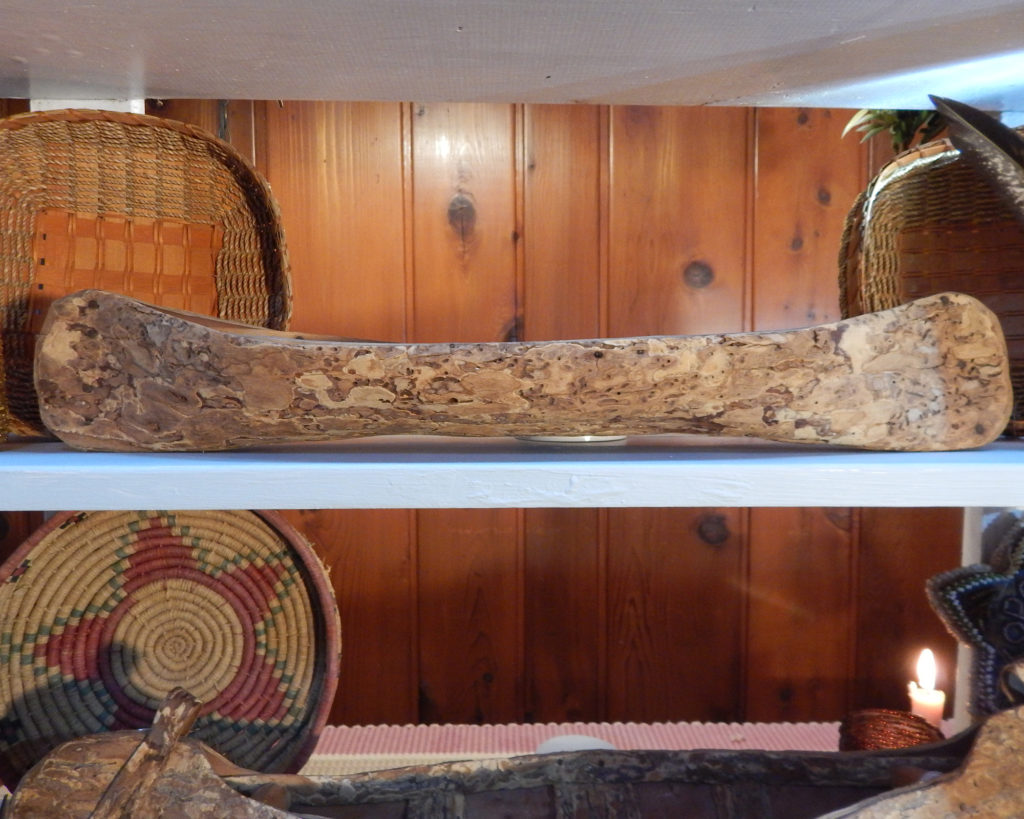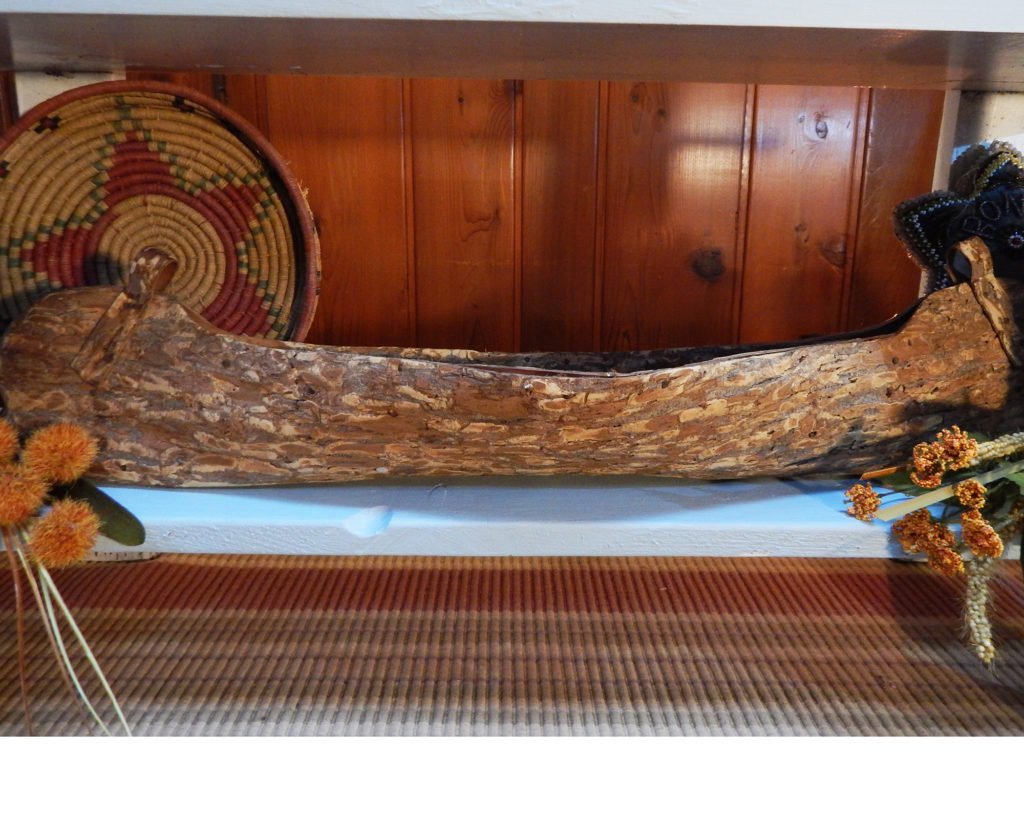
Woodland Heirlooms
North American and Canadian First Nations Woodlands Indian tribes made bark canoe models in the 1800s to early 1900s that were accurate replicas of the tribes’ full-size canoes.
Bark canoes built by indigenous people were integral for many tribes. The development of stable bark canoe design took decades of experimentation. Canoes had to be steady, so they wouldn’t tip to either side when fully loaded, but still lightweight and portable. These canoes were constructed by Woodland peoples with access to deciduous trees including elm, hickory, spruce, cedar and birch.
Birch bark is an ideal material for canoe construction. It is light weight, resilient, relatively tough, and has natural waterproofing features. This means it can be used effectively on the rivers and lakes of the Woodland region, but also survive portages through the wilderness around rapids and waterfalls.
The elm bark canoe was not equal to the birch bark for speed, portaging or durability. It was heavy, difficult to put together, almost impossible to make water-tight, and split easily on contact with rocks. It was generally used as a hastily constructed emergency craft for short voyages. But the country south of Lake Ontario did not contain birch trees of the size and quality found further north. The Iroquois, therefore, were frequently compelled to use elm bark, and the canoe models in this post reflect that limitation.

Making bark canoe models was initially a form of retaining cultural knowledge for Woodland tribes. Artists and craftsmen would spend many hours creating canoe models which were icons of immense pride and hung in aboriginal homes. Canoe models eventually became popular as toys and handicrafts traded among early Europeans as they began adopting bark canoes built by indigenous peoples. Canoes became a common mode of transportation for explorers and fur traders throughout Canada’s Woodland regions, and they wanted to take souvenirs of their travels in the New World back to their homes in France and England.

In the late 1800s and into the 20th century, many Native American and Canadian First Nations tribes began making more of their handicrafts such as baskets and bark canoes for the tourist trade in places like the Adirondacks. Aboriginal families brought their wares to resort areas during the summers and sold to camp owners and tourists from roadside stalls and the back of their trucks, resulting in rustic Adirondack model canoe collections throughout the area.

In the 1920s and 30s, these canoes were still made using time-consuming traditional methods and exceptional detail. As greater production meant less craftsmanship could be put into each canoe, methods were adapted to increase capacity. The old ways of making these treasures eventually died out, and souvenir canoes are now as likely to be made in China as in Canada.
We’ve been fortunate to have had the opportunity to buy three rare, early elm bark canoe models recently. These three incredible antique Native-made examples are available now in our Etsy shop.

Like This Post?
Please subscribe to our blog to receive new posts by e-mail. We will not share your information with anyone.